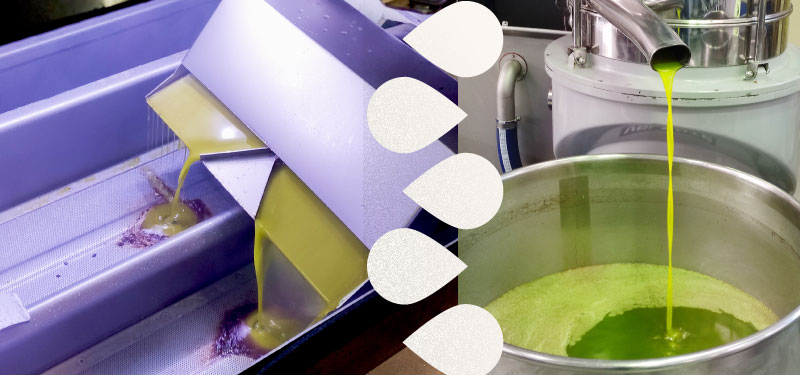Just like wine or bread, its origins and its use in cooking date back a very long time: with the birth of the populations who settled in the Mediterranean basin.
Olives were already recognized as an excellent food source at that time. The use of special tools to press olives and extract their juice is in fact evidenced by archaeological finds dating back to the Minoan period (1880-1500 BC).
In the Mediterranean basin, specifically in Greece, during the classical age one could admire vast olive groves from which large quantities of oil were obtained.
Even then, oil was used not only in cooking but also in cosmetics and for lighting.
Italy also saw the cultivation of the olive tree in very ancient times: already between the 8th and 7th centuries BC and in the Roman world, oil was the only condiment .
And the Romans knew better: they used the best raw oil to dress salads, while lower-quality oils (usually from Africa) were used for lighting.
However, oil conservation at the time was not optimal: the product was poorly refined and stored poorly (not protected from light and heat sources, for example), so it went rancid very quickly.
The solution found was to salt it or use it together with olives: we already found olives in oil at that time, which were preserved in this way until the moment of pressing, so as to have fresh oil all year round.
To produce oil , the Romans used an oil mill not too far from those used today: the olives went through the two phases of crushing and pressing.
The oil pressing process

The quality and flavor of industrial olive oil is strongly influenced not only by the quality of the olives used, the place of production, the degree of ripeness and the harvesting methods of the fruit, but also by the method used to obtain it.
Frantoio D'Orazio oil owes its excellence and quality to the experience gained in the field over many years.
For us, studying the product from plantation to harvest was and is fundamental, a story of craftsmanship that we love to continue.
In the old-fashioned way, olives were ground into a paste using a millstone.
Today, the methods used are more modern and allow for the creation of a higher-quality product thanks to cutting-edge technologies, professionalism, and the skills developed over years of work by the entire staff.
In our mill, olive oil production takes place in 8 different phases.
Following the entire pressing process, conducted at temperatures low enough to avoid any alterations, virgin category oils are obtained which must be absolutely impeccable from an organoleptic point of view, in which the following are distinguished:
- extra virgin: free acidity, expressed as oleic acid, less than 0.8%
- the virgin: acidity up to 2%
- Lampante: acidity higher than 2% and not allowed for sale because it is produced with poor quality raw materials
Olive oil obtained through mechanical processes but which does not meet the legal requirements can be refined, that is, subjected to chemical processes that eliminate its chemical and organoleptic defects and mixed with virgin oil and then sold as olive oil with an acidity level not exceeding 1%.
Our extra virgin olive oil

If you are curious to discover the pressing process, you can visit our mill.
Specifications on the oil label
The specifications we often find on the label with the words "first cold pressing" or "cold extracted/produced/obtained" are optional and reserved only for virgin oils obtained with processes that allow them not to exceed 27°.
Manufacturing companies can then decide whether to indicate the level of acidity: in this case they must also specify other chemical characteristics of the oil.

Since January 2008, it has been mandatory to specify the origin of the olives.
In Italy, olive oil production and consumption have always been very abundant: Italians use an average of 8 liters of olive oil per capita, and each family spends an average of 117 euros per year.
And it is also a highly appreciated product abroad (source Coldiretti).
Not only that: Italy is the world's largest consumer and second largest producer, with a heritage of over 500 cultivars , 42 DOP oils , 7 IGP oils and numerous Slow Food Presidia.
National olive oil production in the 2019/2020 campaign amounted to 365,000 tons! (Source: Consortium).
